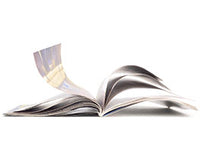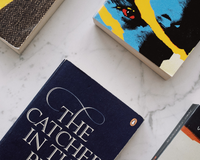Would you like to see your stories, artwork, or photos in a book that is perfectly bound? Creating your own saddle stitch booklets is much easier than you think. To accomplish this task you need just a few tools and relevant knowledge on hand, in particular, loose pages can be changed into publications that will look professional, and thus your work will be unique.
Getting Started with Your Project
First, collect your paper, a long-arm stapler, and a bone folder for neat folds. The key to a finished product that is awesome lies in choosing the right paper weight for the project and that is when you do not choose a paper the light that it would feel flimsy, and when you choose a paper too heavy, the folding would not go well.
Setting Up Your Document

Your computer system configuration is a key element in your booklet's quality. Use your design software to set up a new piece of document in which pages will be in multiples of four. By this four pagination systems will be printed on each side of one sheet. The forward and backward ones. The print shops refer to that kind of format as the printer's spreads.
Eg. In a 16-page booklet, the first page will have sheets 1 and 16 on top of the sheet and pages 2 and 15 on the opposite side of the sheet. This pattern is the one followed at your document level when the pages are aligned to the outside ones plus the interpages.
The Printing Process
Now, make sure printing is possible on both sides of a paper (indicated duplex printing can be used). Nevertheless, in case your printer is not functioning, it is necessary to turn the paper by hand, thus requiring more preciseness.
Put your paper in the tray and make sure it's straight along the path. The initial step should be to print a trial copy on common paper. This way you can correct possible setting errors before using your precious stock. It's not a bad idea to slow down a bit here in fact it could save you from getting into mistakes and wasting a lot of paper.
Folding and Assembly
At this point, your booklet begins to take shape. Assemble your printed sheets in the sequence that they were intended, lining up the page numbers correctly. Hold on to the middle of the bunch, and make an accurate crease with your bone folder. This device is used to make folds look neat and undamaged.
The Art of Binding
Position your long-arm stapler at the fold line. Most booklets need two or three staples, spaced evenly along the spine. Press firmly but carefully - you want the staples to penetrate all layers without tearing the paper. Once stapled, run your bone folder along the spine again to smooth any bulging around the staples.
Finishing Touches
Your booklet is almost complete, but these final steps make all the difference. Check that all pages align perfectly at the edges. If needed, trim the fore-edge (the side opposite the spine) using a paper cutter. This step gives your booklet that clean, professional look that makes people say "Wow!"
Troubleshooting Common Issues
Even experienced booklet makers run into occasional snags. If your pages don't line up perfectly, double-check your printer settings. When staples don't go through cleanly, try reducing your page count or using thinner paper. Think of each challenge as a learning opportunity to refine your technique.
Quality Control Tips
Take time to inspect your work. Run your hands over the fold to feel for any irregularities. Flip through the pages to ensure they turn smoothly. Look at your booklet from different angles to spot any imperfections that need attention.
Making Your Mark
Creating handmade publications adds a personal touch that digital formats can't match. Whether you're producing zines, portfolios, or wedding programs, saddle stitch binding offers a professional finish that's both durable and attractive.
For those times when you need extra help or want to scale up production, consider visiting printstarbooklets.com. Their expertise can take your projects to the next level, especially when dealing with larger quantities or special finishing requirements.
The Perfect Final Product
Adding decorative elements can give your booklets extra flair. Consider using specialty paper for the cover to make it stand out. You might choose textured stock or a slightly heavier weight than the interior pages. Some creators add simple embellishments like corner details or border designs that complement the content without overwhelming it.

Storage matters too - keep your finished booklets flat and away from direct sunlight to prevent warping or fading. If you're shipping them, use rigid mailers and consider adding cardboard backing for protection. These small details show care for your work and help ensure it reaches its destination in perfect condition.
Final Words
Remember that practice leads to better results. Each booklet you create helps you refine your technique and develop an eye for quality. Soon you'll be producing beautiful publications that showcase your content in the best possible light.
Your journey into booklet-making opens up endless creative possibilities. From photo albums to poetry collections, the skills you learn here will serve you well in many future projects. Take pride in creating something tangible - something readers can hold in their hands and treasure for years to come.





